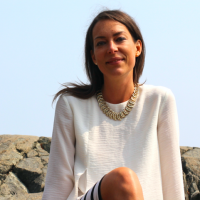
We like to sling big words and labels at other people (and other relationships), but do we ever shine the light on ourselves, and see if we too could use healing from that shadow?
I am a codependent. Or, I used to be an active codependent and consciously try to not be that anymore. Because codependency breeds abusive cycles. It’s part of our evolution to grow out of harmful behaviours and mindsets within our own self, and those we bring to other people.
It was hard to claim this title. I didn’t know what it meant at first. I thought it meant I should be ashamed and that I was bad or innately flawed. The word codependency felt like a curse—especially when I went to my first al-anon meeting.
However, codependency is none of these things. It is something we learn. It is a way of relating what we are taught from a young age and grow up knowing. Often, it shows up as the tendency to be stuck pursuing things or people who don’t actually want us (we know this because they act in cruel ways), or they continually play out an unhealthy push and pull dynamic. This is displayed to the extreme in overtly abusive situations with addicts or predators, but it is also common in the everyday family, and within our own selves too.
It’s nothing to be ashamed of if you are a codependent. Actually, shame is a tool codependency uses to keep us locked in the toxic habit of grasping at things that hurt us. In this way, it can become more apparent that we have codependent traits when we are connected with others. What we may overlook though, is that at the base of this—the codependent relationship we have within ourselves.
At the core of most dysfunction is an unhealthy internal relationship—a fight and make-up cycle we play out internally, one that we externalize when we are with others. That’s why I teach clients and share through writing those processes that support the creation of a loving and compassionate interior space. When we are overly critical of ourselves, we have a tendency to be abusive to our body and to other people, too.
The codependent relationship is based on the abuser and the caregiver. It is rooted in a sort of violence (negative thought, harmful internal dialogue, hurtful behaviour, addiction enabling, and so on). Followed by some sort of supplicating strategy: “I won’t do that again. I will do it perfect next time. I’m sorry. I’m sorry. I’m a terrible person. It’s okay.”
When we are in a codependent relationship with ourselves, our emotional experience swings from extreme bliss and joy, to extreme hate, anger, and frustration quickly and regularly (it’s the same as when we are in a codependent relationship with another person).
Codependency is based and dependent on receiving, reacting, and expressing strong emotions.
So if this sounds like your internal world, pause. Don’t beat yourself up about it (shaming encourages the cycle of self-hate), just notice that this is happening.
A medicine for individual codependency can be to work on being a witness to the roller-coaster of feelings and dialogue within—rather than interacting with them (which just encourages more of the same). The ideal way is to regulate our inner world, so we grasp less to extremes and remain peaceful and at ease. We witness rather than becoming caught up in a battle with our emotions or reactions.
Codependency breeds within because we internalize critical discipline growing up and use it on ourselves as punishment as adults. However, we don’t grow from abuse. We wilt from it. Which means to pursue bigger goals, more abundance, and joy in our lives, we must work on releasing this internal tendency.
Begin to notice your inner landscape. Practice mindfulness with it. Could you be more gentle and kind in there? For example, when you make a mistake, do you slam yourself with criticism afterward? Most of us do. However, we are meant to positively reinforce for a better outcome, not break ourselves with insults.
As we attempt to commit to observing the conversations that play out inside, we strengthen our witness consciousness (a hot word in the meditation, yoga, and psychology sectors). When we catch ourselves being abusive, pause. Take a breath. Try saying a constructive affirmation instead, like: “You can do this. It’s okay to try again. I believe in you. One step at a time.”
To some, this practice is odd. However, what’s a more inspiring experience, having a corporal drill sergeant or a compassionate guru living within? Ram Dass was a huge advocate for developing witness consciousness as a means for healing.
Internal codependency resolves when we heal our abusive relationship with our self. So too, does the wounded inner child find wholeness this way (more about the inner child soon).
Self-healing takes time and the building up of trust with our own self. But, now is a great moment to begin!
When we are stuck in codependent relationships with others, it might serve us to ask if it’s because we haven’t healed our codependency within? We may accept extreme treatment and abusive tendencies in other people because we treat ourselves that way, and so it’s familiar—and familiar seems safe (even when it’s not).
The first time I went to a codependency 12-step group in my 20s, I cried and cried. I thought it was my fault and that I was bad. I suspected that I had failed. I was going to be stuck like that forever. But, codependency is the product of our society and environment.
The inspiring thing about codependency though is as autonomous adults we get to change it.
~
*References that may support healing in this realm are Melody Beattie’s, Codependent No More, Alice Miller’s, The Drama of the Gifted Child, Al-Anon groups, and all things that support the healing of our wounded relationship within.











Read 9 comments and reply